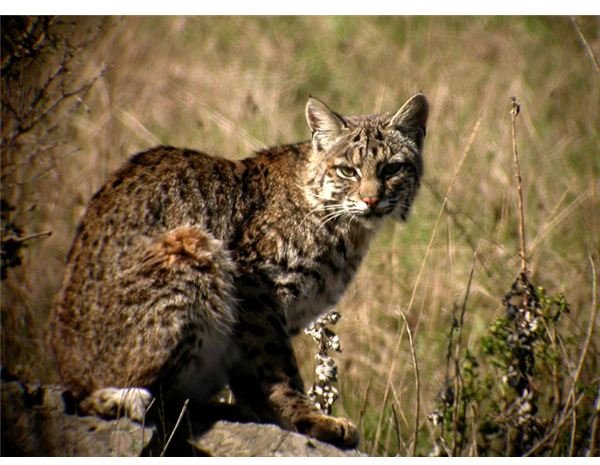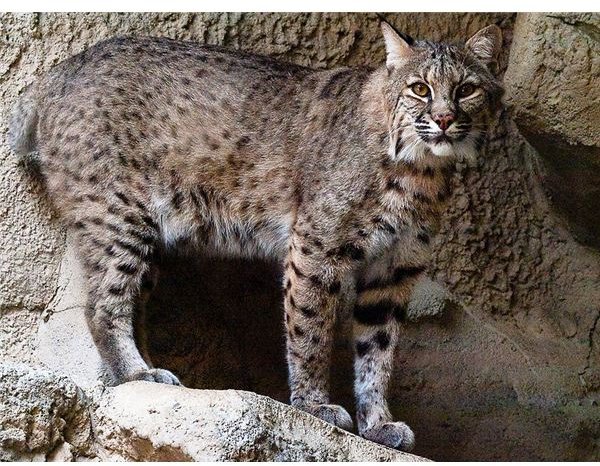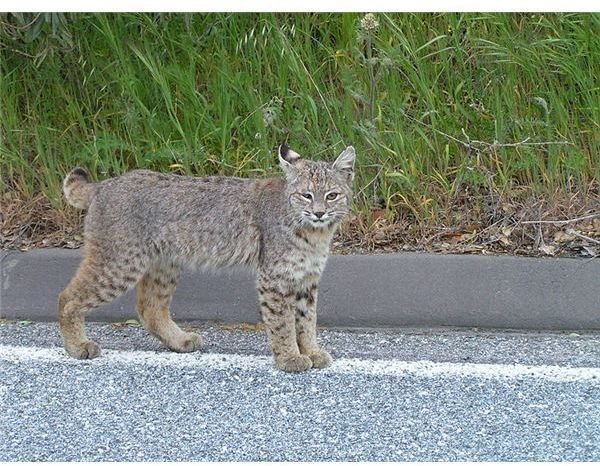Bobcat Facts and Information: Facts About the National Bobcat Diet, Habitat, Reproduction, Life Span and More
The Bobcat
Here all the specifics you need to know about the bobcat; facts about what makes them unique, their traits, behaviors and so forth. Learn more about their signature features, origin and habitat, reproduction, life span, diet and species.
Facts About the Bobcat’s Behavior
This intelligent animal premeditates every move it makes. The bobcat’s main purpose of travel and sleep is
dependent on the overall availability of its food. This behavior varies seasonably as a response to the activity of their prey.
Bobcats are nocturnal animals and during most of the year, they travel at night, covering a range of two to seven miles along a habitual route. They start their travels in the evening, traveling and hunting until about midnight and starting again before dawn. During fall and winter, this pattern is switched, and they become more diurnal since their prey are livelier during the day in the colder months.
Let’s examine more bobcat facts related to their behavior during reproduction and mating, when they travel, and how they hunt for food.
Distinct Features of the Bobcat
Bobcats are very attractive animals; replicas and models of them as stuffed animals

and cartoons figures are seen almost everywhere. They are close relatives of the lynx cat and are actually listed among its species as the lynx rufus.
An adult bobcat, however, is significantly smaller in size than a mature lynx cat but twice as big as any domestic cat, not considering a fully-grown male Savannah cat or Maine coon. Its coat may vary from tan to grayish brown with black spots and streaks covering the body, dark bars on the foreleg, and often a black-tipped stubby tail from which its name is derived.
They have what may appear to be heavy side burns and a whiskered face. The ears are short, hairy and pointed with black tufted tips. Their underbelly is much paler in shade and lacks the fancy patterns seen on the rest of their body. The fur is brittle but quite long and dense. The nose of the bobcat is pinkish-red, and the eyes are yellow with black pupils. They have sharp hearing and vision and a good sense of smell.
Here are some more interesting bobcat facts:
- Bobcats in desert regions of the southwest have lighter coats than those in the northern-forested regions.
- The bobcat’s hind legs are longer than its front legs, which gives it a bobbing way of walking.
- The largest bobcat on record weighed 48.9 pounds, although there are unverified reports of them reaching up to a whopping 59 pounds.
- Bobcats are excellent climbers and swimmers; they will swim if needed but normally avoid water.
- Male bobcats are larger than females, but both genders are found to be larger in the northern region than anywhere else.
The Bobcat’s Origin & Habitat
The bobcat originated in North America with their dwellings ranging from southern Canada to northern

Mexico and extending through the continental United States. They inhabit wooded areas, as well as grasslands, semi-deserts, urban edges, forest edges, and swampland environments.
The size and region of their habitat territories is solely dependent upon the distribution and availability of prey. As they journey throughout their range, bobcats mark their territory with feces, urine and scratches on surrounding trees and logs in the area. They sleep just about anywhere; shrubs, hollow logs, bush piles, trees, under ledges, caves and dens.
Reproduction & Mating
The female bobcat will start breeding as early as in her first year of life but usually by the second summer.

They start to mate in the latter part of the year during the winter and spring and continue being fertile until the following summer.
Gestation is only two to two and a half months, and a litter can be as small as one kitten to as many as six. The female generally gives birth in enclosed spaces like a small cave or hollow log. Once a kitten reaches three to five months, they begin to travel with the mother and will shortly begin hunting by themselves.
Bobcats have very distinct mating rituals. Once a male recognizes the female is receptive, he instantly grasps her neck with his mouth and begins copulation, during which he belts out loud screams, hisses and other sounds. Bobcats will mate several times during the year but their consistency may vary by location. The females will mate with several different males and likewise, the male with several different females. Bobcats remain reproductively active throughout their entire lives.
Life Span of the Bobcat
Although humans hunt bobcats extensively for their fur as well as for recreational sports, their population is abundant and resilient. This is a result of their high reproductive rate combined with their longevity. Bobcats typically live to six or eight years of age with a few reaching beyond 10 years. The longest they have been known to live is 16 years in the wild and 32 years in captivity.
The Bobcat’s Diet
Even though their whole lives revolve around the availability of their food, bobcats can go days without eating.

Instinctively, they prey on small animals such as rabbits, hares, cotton rats, squirrels, birds, fish, insects and different types of poultry. When small animals are not readily available, these predators will go after larger animals such as foxes, minks, skunks, small dogs, and even domestic cats. On rare occasions, the bobcat will prey on goats, sheep, deer and fawns and keep returning to feed continuously on their meat.
Species of the Bobcat Family
Modern taxonomic sources list bobcats under the lynx rufus species, which are assumed to have evolved from the Eurasian lynx. There are twelve recognized subspecies: The lynx rufus rufus, lynx rufus gigas, lynx rufus floridanus, lynx rufus superiorensis, lynx rufus baileyi, lynx rufus californicus, lynx rufus escuinipae, lynx rufus oaxacensis, lynx, rufus pallescens, lynx rufus peninsularis and lynx rufus texensis.
Now that you know some fascinating bobcat facts, you may want to learn other facts about these amazing animals. You can start by reading some books at the public library or searching the Internet for more data.
References
Bobcat, Lynx Rufus – Natural History - https://www.uwsp.edu/wildlife/carnivore/Bobcat
Prey Selection by Reintroduced Bobcats (Lynx rufus) on Cumberland Island, Georgia - https://www.bioone.org/doi/abs
Home Range, Habitat Selection, and Survival of Bobcats, Lynx rufus -https://md1.csa.com/partners/viewrecord.phprequesters
Image Credit
Image credit/Wikimedia Commons/Wayne Dumbleton/https://commons.wikimedia.org/wiki/File:Bobcat_lynx_rufus.jpg
Image credit/Wikimedia Commons/Len Blumin/https://commons.wikimedia.org/wiki/File:Bobcat_stare.jpg
Image credit/Wikimedia Commons/Malcolm/https://commons.wikimedia.org/wiki/File:Bobcat_at_Fort_Worth_Zoo.jpg
Image credit/Wikimedia Commons/Cortada Gonzalez, Laura/https://commons.wikimedia.org/wiki/File:Bobcat_kitten.JPG
Image credit/Flickr/Karen & Brad Emerson/https://www.flickr.com/photos/karenandbrademerson/3817847040/
